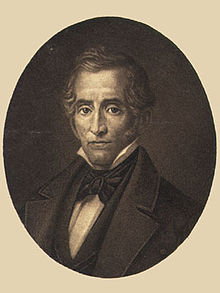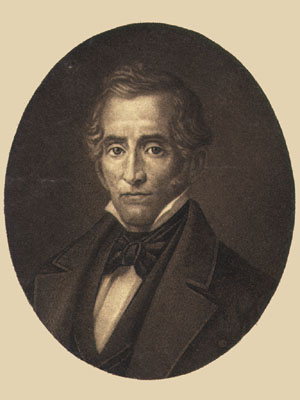Edward Douglass White (March 3, 1795 – April 18, 1847) was tenth Governor of Louisiana and a member of the United States House of Representatives. He served five non-consecutive terms in Congress, as an adherent of Henry Clay of Kentucky and the Whig Party. He was a slaveholder.[2]
Edward D. White Sr. | |
|---|---|
 | |
| 10th Governor of Louisiana | |
| In office February 4, 1835 – February 4, 1839 | |
| Preceded by | Andre B. Roman |
| Succeeded by | Andre B. Roman |
| Member of the U.S. House of Representatives from Louisiana's 1st district | |
| In office March 4, 1829 – November 15, 1834 | |
| Preceded by | Edward Livingston |
| Succeeded by | Henry Johnson |
| In office March 4, 1839 – March 3, 1843 | |
| Preceded by | Henry Johnson |
| Succeeded by | John Slidell |
| Personal details | |
| Born | March 3, 1795 Maury County, Tennessee |
| Died | April 18, 1847 (aged 52) New Orleans, Louisiana |
| Political party | Whig |
| Spouse | Catherine Sidney Lee (Ringgold)[1] |
| Alma mater | University of Nashville (LL.B) |
Biography
White was born in Maury County, Tennessee, the illegitimate son of James White. (Although his parents apparently never married, his father acknowledged him, and the circumstances of his birth did not impede his education or future success.) James White was a delegate to the Continental Congress. While a young boy, Edward moved with his father to Louisiana.
In 1815, White graduated from the former University of Nashville, afterward beginning a law practice in Donaldsonville, Louisiana, the seat of Ascension Parish, south of Baton Rouge. Ten years later, he was appointed by Governor Henry S. Johnson, also of Donaldsonville, as an Associate Judge of the New Orleans Municipal Court in 1825.
In 1834,[3] he married Catherine Sidney Lee Ringgold, daughter of Tench Ringgold, long the U.S. Marshal in the District of Columbia. Their children included Edward Douglass White Jr.
Political career
Elected to the 21st United States Congress in 1828, White served three terms from 1829 until his resignation in 1834 after being elected as governor. He served a single term as governor (1835–1839). Afterward, he was elected to the U.S. Congress again, serving two more terms from 1839 until 1843.
Lioness incident
White was among the survivors of the steamboat Lioness explosion that occurred on the Red River south of Natchitoches on May 19, 1833.
Death and burial
He died in New Orleans and was buried at St. Joseph's Catholic Cemetery in Thibodaux, Louisiana.
His home in Thibodaux is now operated by the Louisiana State Museum as the Edward Douglass White Historic Site.[3]
Family
White's son Edward Douglass White Jr. was elected by the state legislature as a United States senator from Louisiana. He was appointed as an associate justice of the United States Supreme Court, later appointed 9th Chief Justice by U.S. President William Howard Taft.
References
Sources
External links
Wikiwand in your browser!
Seamless Wikipedia browsing. On steroids.
Every time you click a link to Wikipedia, Wiktionary or Wikiquote in your browser's search results, it will show the modern Wikiwand interface.
Wikiwand extension is a five stars, simple, with minimum permission required to keep your browsing private, safe and transparent.
